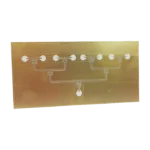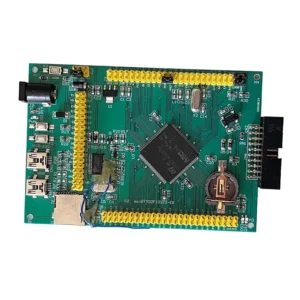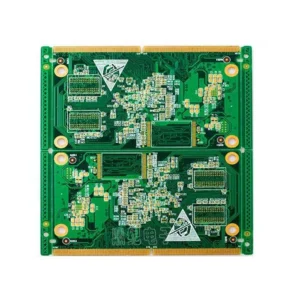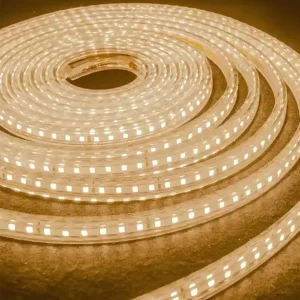Rogers 4350B PCB
$97.00
RO4350B is made of a glass-reinforced hydrocarbon and ceramic composite, designed for RF applications up to 77GHz. Many prefer this type of PCB material for high-frequency projects because it offers tight dielectric tolerances, good heat management, is nice for using lead-free soldering, and has a highly stable structure. Thanks to these features, the Rogers 4350B PCB works dependably in high-frequency applications.
Shipping fee and delivery date to be negotiated. Send inquiry for more details.
Your payment information is processed securely. We do not store credit card details nor have access to your credit card information.
Claim a refund if your order is missing or arrives with product issues, our support team would deal with your refund within 24 hours.
| Layer Counts | 8L |
| Base Material | Rogers 4350B |
| Board Thickness(mm) | 2.0 |
| Max board size(mm) | 570*670 |
| PCB size tolerance | ±0.3mm |
| Min. Hole Size | 0.3mm |
| Min. Line Width | 6mil |
| Copper Weight | 2oz |
| Surface Finish | ENIG |
| Certificate | UL, RoHS, ISO, and REACH |
 Rogers 4350B PCB
Rogers 4350B PCB
| 5 star | 0% | |
| 4 star | 0% | |
| 3 star | 0% | |
| 2 star | 0% | |
| 1 star | 0% |
Sorry, no reviews match your current selections
Questions & Answers
1.Are Rogers PCBs more costly than FR-4?
Yes! Rogers PCB materials typically cost more than standard FR-4 substrates, but they deliver superior performance in high-frequency applications.
2.How does Rogers 4350B compare with PTFE-based materials?
Rogers 4350 and PTFE materials are both used for high frequency applications. Compared with PTFE-based laminates, Rogers 4350B materials are easier to process, offering a good balance of performance, manufacturability, and cost.
3.Which Rogers materials are most commonly used in the market?
Here are the most widely used Rogers materials, covering RO4000 Series, RO3000 Series, and RT/duroid PTFE.
4.How to choose the right Rogers materials?
When choosing the Rogers materials for your applications, consider these key factors carefully:
▪Operating Frequency
▪Dielectric Constant (Dk)
▪Loss Tangent (Df)
▪Coefficient of Thermal Expansion (CTE)
▪Glass Transition Temperature (Tg)
▪Peel Strength
▪Flammability Rating
5.What industries rely on Rogers PCB materials?
Rogers PCB materials are widely used in many industries like automotive, defense, telecom, aerospace, etc.







